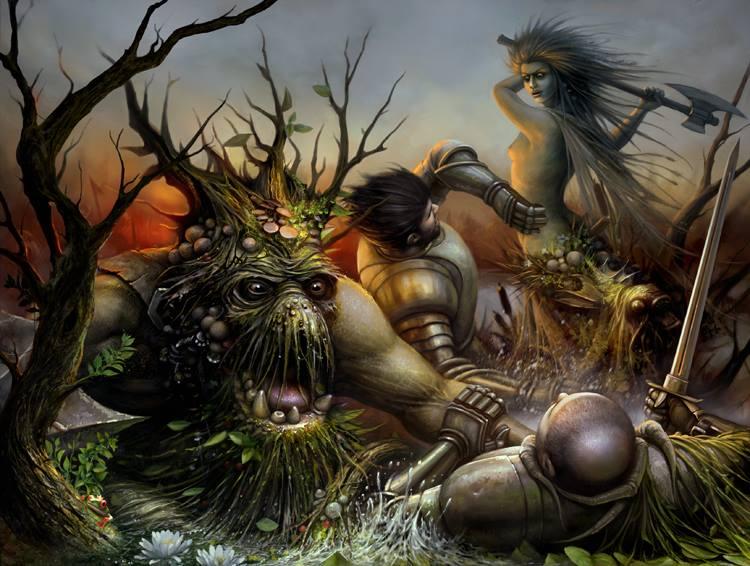Land spirits (Old Norse landvættir) are the localized animating spirits of the land. (Polytheistic gods are immanent within the land as well, but have a more universal range; nevertheless, the line between gods and land spirits in the pre-Christian religion of the Norse and other Germanic peoples is hardly clear-cut.) They wield considerable influence over the well-being of the land and all who depend on it.
They can bless or curse those who live or travel within their land, and be blessed or cursed by them in turn. They’re fierce protectors of their native lands, seldom tolerant of mistreatment and dishonor, and seem to have a very passionate disposition in general.
The pre-Christian Germanic peoples seem to have taken great care to maintain the land spirits’ favor. For example, the first law code of Iceland (930 CE) instructed those entering the country by ship to remove the dragon-heads from their boats when they sighted land, lest they frighten the land spirits.
Just as there’s no absolutely distinct line between the land spirits and the gods, the lines that separate the land spirits from the elves, dwarves, and giants are blurry as well.
As with the elves, the worship of the land spirits continued long after the Germanic peoples were officially converted to Christianity and the veneration of the principal heathen gods had become little more than a folk memory.
#asatru #pagan #heathen #norse
They can bless or curse those who live or travel within their land, and be blessed or cursed by them in turn. They’re fierce protectors of their native lands, seldom tolerant of mistreatment and dishonor, and seem to have a very passionate disposition in general.
The pre-Christian Germanic peoples seem to have taken great care to maintain the land spirits’ favor. For example, the first law code of Iceland (930 CE) instructed those entering the country by ship to remove the dragon-heads from their boats when they sighted land, lest they frighten the land spirits.
Just as there’s no absolutely distinct line between the land spirits and the gods, the lines that separate the land spirits from the elves, dwarves, and giants are blurry as well.
As with the elves, the worship of the land spirits continued long after the Germanic peoples were officially converted to Christianity and the veneration of the principal heathen gods had become little more than a folk memory.
#asatru #pagan #heathen #norse
Land spirits (Old Norse landvættir) are the localized animating spirits of the land. (Polytheistic gods are immanent within the land as well, but have a more universal range; nevertheless, the line between gods and land spirits in the pre-Christian religion of the Norse and other Germanic peoples is hardly clear-cut.) They wield considerable influence over the well-being of the land and all who depend on it.
They can bless or curse those who live or travel within their land, and be blessed or cursed by them in turn. They’re fierce protectors of their native lands, seldom tolerant of mistreatment and dishonor, and seem to have a very passionate disposition in general.
The pre-Christian Germanic peoples seem to have taken great care to maintain the land spirits’ favor. For example, the first law code of Iceland (930 CE) instructed those entering the country by ship to remove the dragon-heads from their boats when they sighted land, lest they frighten the land spirits.
Just as there’s no absolutely distinct line between the land spirits and the gods, the lines that separate the land spirits from the elves, dwarves, and giants are blurry as well.
As with the elves, the worship of the land spirits continued long after the Germanic peoples were officially converted to Christianity and the veneration of the principal heathen gods had become little more than a folk memory.
#asatru #pagan #heathen #norse





